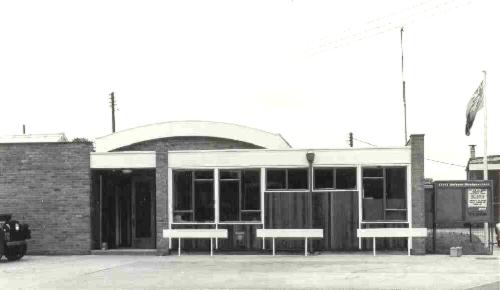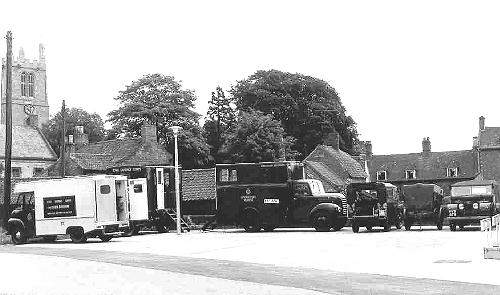|
The Civil Defence
The Civil Defence, or civil protection service, was established to organise activities by the civilian population to a level where it could mitigate the effects of enemy attack. Its origins date back to the Second World War of 1939-45 when civil defence efforts were concentrated on providing adequate warnings of air raids to permit the civilian population reach shelter. Fire-fighting, food, rescue, communications and ambulance services were organised under the same umbrella and although the work was given a lower priority after the war had ended, interest was later revived and concentrated on the possible effects of a nuclear attack.
A decade later, the threat from nuclear weapons also led to the building of fall-out shelters in Britain, the United States, Russia, China and elsewhere, but many aspects of military activity altered in 1968, most notably the complete change from an air-launched nuclear deterrent to the hidden silence of the Polaris submarines. The Civil Defence, always the Cinderella in preparations for war, was officially stood down, a euphemism that hid its complete disbandment.
Bourne was among several centres in South Lincolnshire that had an active Civil Defence Corps, operating from the offices of Bourne Urban District Council at Wake House with training sessions at the fire station and the Vestry Hall in North Street and other convenient locations around the district. It had more than 100 members from all walks of life and many of them had served for up to 20 years.
At that time, Lincolnshire was divided into three county sub-divisions, Holland, Lindsay and Kesteven, and Bourne was administered by the latter until the local government re-organisation of 1976. When nuclear attack appeared to be a real possibility during the mid-20th century, the Civil Defence was again given a high priority by central government and money was made available for its upkeep while here in Bourne, the corps moved into new premises adjoining the fire station that had been opened in South Street in 1945. The headquarters and training centre was purpose-built for the Civil Defence organisation, having been designed by Kesteven County Council's own architects between 1963-64 and completed the following year
when it was officially opened on 21st June 1965 by Sir Walter Merton,
Director-General of Civil Defence in Britain.
The
new headquarters was described as a compact rectangle in modern style,
part brick, part cedar wood, with spacious offices, a main hall 46 feet by
25 feet for lectures and drill which could be divided in two when
required, a smaller classroom, kitchen and bar for the flourishing social
club that had been formed two years before.
|
 |
|
The new Civil Defence headquarters in South Road (above) and a major
training exercise underway in 1965 (below). |
|
 |
At
that time, the Bourne branch had 60 members training on three evenings
each week from January to April and September to December, the summer
break introduced in deference to the needs of agriculture in which many
members were employed. Their classes
including instruction in first aid. One of their biggest practice turnouts
took place over the weekend of 20th-21st March 1965 when they joined
members from other towns in South Kesteven for Exercise Southdiv II at
Folkingham resulting in a total involvement of 150 people who all stayed
the course despite atrocious weather including rain, snow and a gale.
Social activities were also an important feature of the organisation and
they included trips to see the pantomime on ice at Wembley Stadium in
London, Coventry Cathedral, Warwick Castle and Stratford-upon-Avon, a
buffet dance and cabaret at the Corn Exchange and an annual Christmas
party.
The new building in South Road however saw little operational activity because in the spring of 1968, the world situation had changed and the threat of a nuclear attack was perceived to have receded. Britain's Civil Defence organisation was deemed to have outlived its usefulness and was stood down.
When disbandment came on 31st March 1968, the strength of the entire Civil Defence Corps in Kesteven numbered 684 with eight full time staff and training centres at Stamford, Grantham, Sleaford, North Hykeham, Metheringham and Bourne.
It was decided that some of the full time staff would be made redundant but efforts were made to absorb some of them into other departments of the county council. The Area Officer, Mr S Hainsworth, who had been in command at Bourne for eight years, said he was keenly disappointed at having to part with people who had established such a splendid
esprit de corps. He went on: "During the time the Civil Defence has been in operation, one in every 36 members of the public have been members. These people have worked exceptionally hard in training to do special jobs in time of attack. Their efficiency has been tested from time to time in various exercises and have always proved how extremely competent they are. We have had splendid co-operation form the public and I shall be very sorry to see our organisation disintegrate."
Civil Defence social clubs throughout the county held farewell events and in Bourne it took the form of a buffet supper in April 1968 when Alderman Gordon Foster, chairman of the county Civil Defence committee, was guest of honour and he thanked members for their splendid service. The county Civil Defence officer, Mr P T W Mather, was also present, and he voiced the doubts of many members over the government's decision to disband the service. "This is the second time I have seen a stand down of the Civil Defence", he said, "The first time was after the end of the war in 1945. Then there was a purpose in it because everyone could do with a well-earned rest. On this occasion though, no one can say why it is happening."
Area Officer Mr Hainsworth was equally confounded. "I wish to thank all members for their loyalty but I cannot understand the government's decision to stand down the corps. Forgive them, for they know not what they do."
The disbandment of the Civil Defence Corps left Kesteven County Council with a nearly new redundant building in South Street on its hands but the premises were eventually converted for use as Bourne's new public library. The service was transferred from the Bourne Institute in West Street later that year and the building continues in use until the present day.
REVISED MAY 2002
See also Bourne public library

Go to:
Main Index Villages
Index
|

